White rhinos or the Ceratotherium simum are large, herbivores that live in the African regions of Kenya and Uganda. These rhinos are one of the largest land mammals on Earth, but they are rapidly becoming endangered due to poaching for their horns.
- Status: White rhinos are Near Threatened
- Known as: White Rhino, White Rhinoceros, Square-lipped Rhinoceros.
- Estimated numbers left in the wild: 20,000 (southern species), 4 (northern species).
White rhinos can be found with either two or three horns; the third horn is used as a show of dominance during mating periods. They also have poor vision, so they rely on hearing and smell to detect prey and predators and anything else that happens nearby!
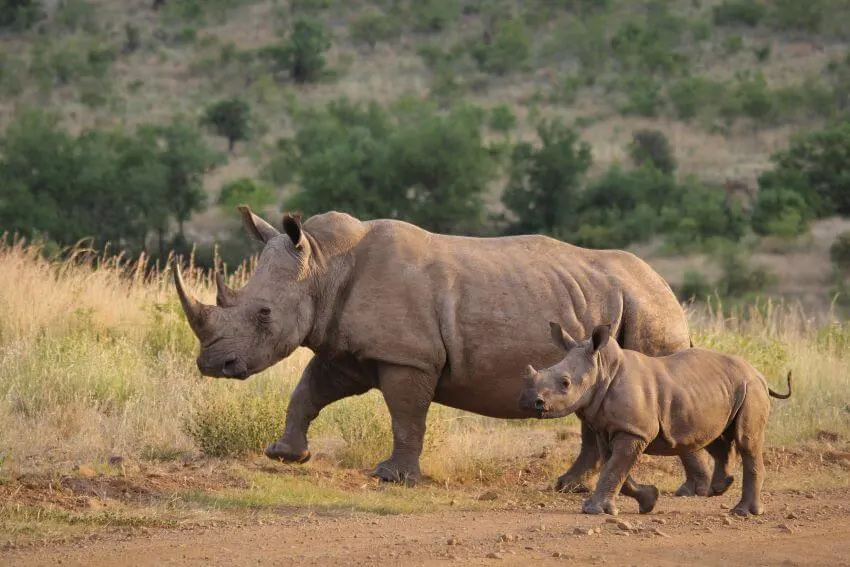
Northern White rhinos are critically endangered due to poaching by poachers. According to the World Wildlife Fund, there were about 2,900 numbers northern white rhinos left in the world as of 2014.
Today, there are only four White Rhinos left in the world.
White rhinos are listed as an endangered species due to poaching, both for their meat and their horns, which are valued in traditional Chinese and traditional Asian medicine.
Where they are ground into powder or manufactured into tablets to be used as a treatment for a variety of illnesses, such as nosebleeds, strokes, convulsions, snake bite, and fevers, their horns are also used to create dagger handles in Yemen.
Rhinos have been listed as critically endangered since 1996 by the International Union for Conservation of Nature (IUCN). They were once found across much of sub-Saharan Africa, but their numbers have plummeted, largely because of poaching.
Description
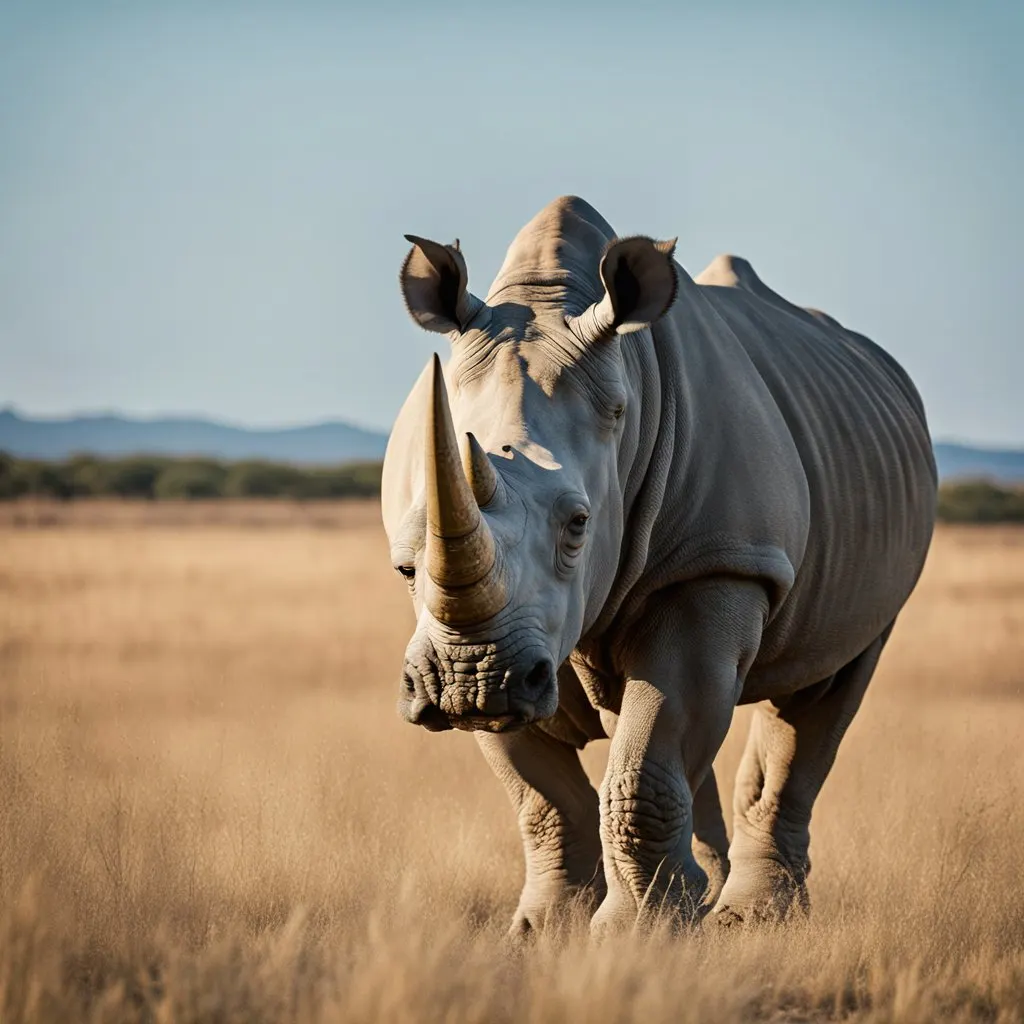
White rhinos are large herbivores that live in the African regions of Kenya and Uganda. They are one of the largest land mammals on Earth, but they are rapidly becoming endangered due to poaching for their horns.
They can be found with two or three horns; the third horn is used to show dominance during mating periods. The black rhino has poor eyesight, relying on hearing and sense of smell to detect prey and predators.
They may also use their sense of touch by feeling the ground with their feet or using one of their five senses, especially its best sense of smell.
See Related: Environmental Organizations in North America
Anatomy and Appearance
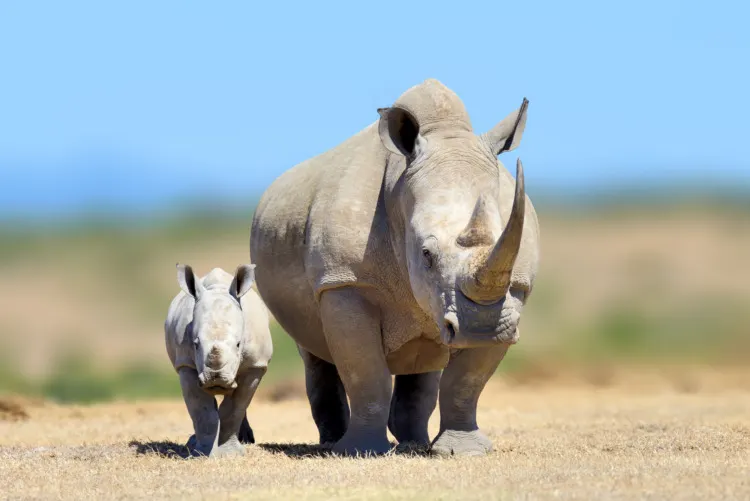
White rhinos or Square-lipped Rhinoceros, are the largest of the five rhino species. Their distinctive features are a hump on the back, a square, broad lip used for grazing, and three toes on each foot.
They can grow up to 4 meters long and up to 1.85 meters in height. Their weight typically ranges between 1.3 – 3.6 tonnes for adults, almost double that of a black rhino.
They have two horns made of keratin (the same as in human teeth), with the front horn reaching an average of 90 cm in length.
Location

The Southern White Rhinos can be found in South Africa, Namibia, Kenya, and Zimbabwe. The remaining 4 wild Northern White Rhinos can be found in the Garamba National Park in northeast DRC, and there are unconfirmed reports that there might be a few survivors in South Sudan.
Both sub-species can be found on grassy plains and the savannah.
White Rhino Habitat
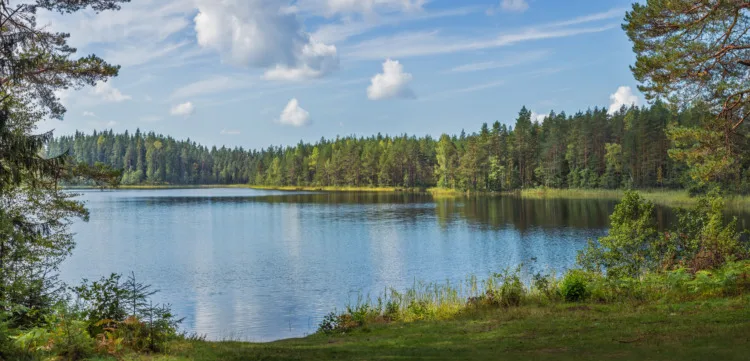
These species’ habitat is in the regions of Kenya and Uganda. These rhinos are herbivores, so they eat plants. These species live primarily in Africa south of the Sahara Desert. They generally inhabit savannas, grasslands, open woodlands, and some forests with sufficient water and vegetation to provide food year-round.
White Rhino populations consist of Northern White Rhino (found in Uganda and Central African Republic) and Southern White Rhinos (found mostly in Zambia, Zimbabwe, and South Africa).
White Rhino Diet and Nutrition
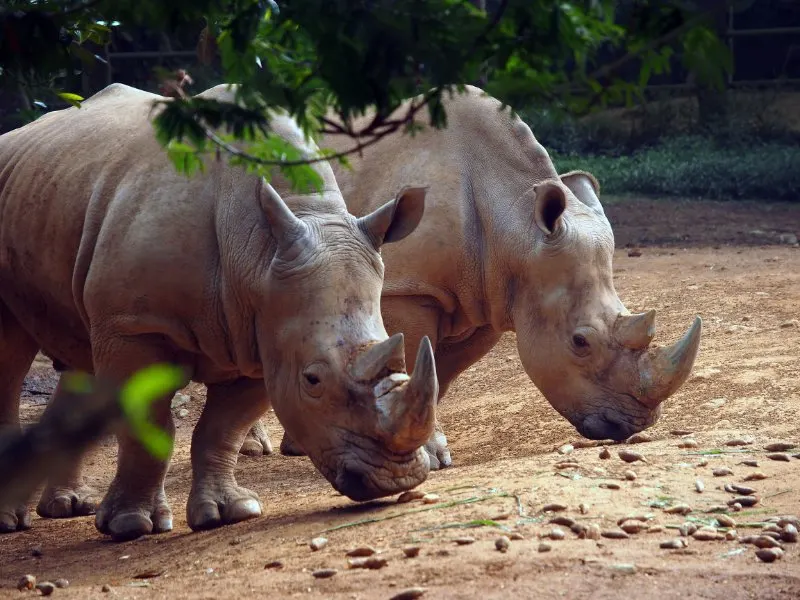
They are herbivores that primarily eat grass, but they will also eat leaves, branches, and fruit. These rhinos have a four-chamber stomach that helps them digest their food properly. They can live up to 50 years old and typically weigh between 1,800 and 2,700 pounds.
These species’ calves are generally born after a gestation period of 14 months. White rhino milk is nutrient-dense and contains the proper nutrients for the young to grow strong and healthy.
White Rhino Mating Habits
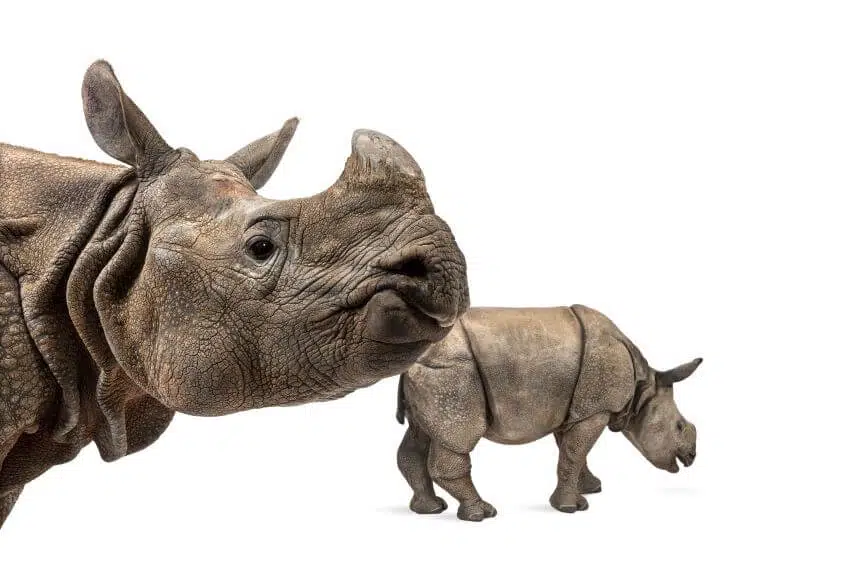
White rhinos are polygamous animals, which means that the males will mate with multiple adult females and does not mate for life. The male white rhino will use his third rhino horn to show dominance during mating season.
These rhinos can mate at any time of the year, but the peak breeding season is typically between March and May.
White rhino calves are generally born after a gestation period of 14 months. White rhino milk is very nutrient-dense and contains the proper nutrients for the young to grow strong and healthy.
White Rhino’s Behavior
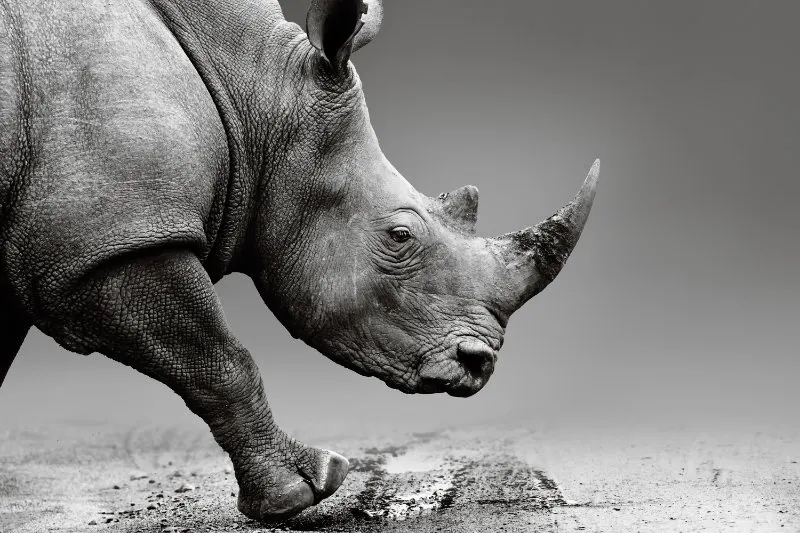
This is not the case with the Siberian or African white rhinoceros, which have excellent eyesight. They also rely on hearing and smell to detect prey and predators and anything else that moves in the vicinity! They are typically active during the early morning and late evening, as these times of day experience a lower overall temperature.
White rhinos typically live in family groups consisting of only a mother and her calves. White rhino males will also travel within their own family group, but they will usually form bachelor groups until mating season occurs.
White Rhino Facts
Here are the fascinating facts about White Rhinos.
- White rhinos live in the African regions of Kenya and Uganda.
- These rhinos are herbivores and eat mainly plants.
- These rhinos have two horns or three horns, depending on the subspecies.
- they use their horns for defense, dominance, and mating rituals.
- These species are poor at seeing, so they rely on their sense of smell and hearing to survive.
- They mate in April and May, and birthing occurs around 15 months later.
- A white rhinoceros is a big, herbivorous animal.
Conservation Status
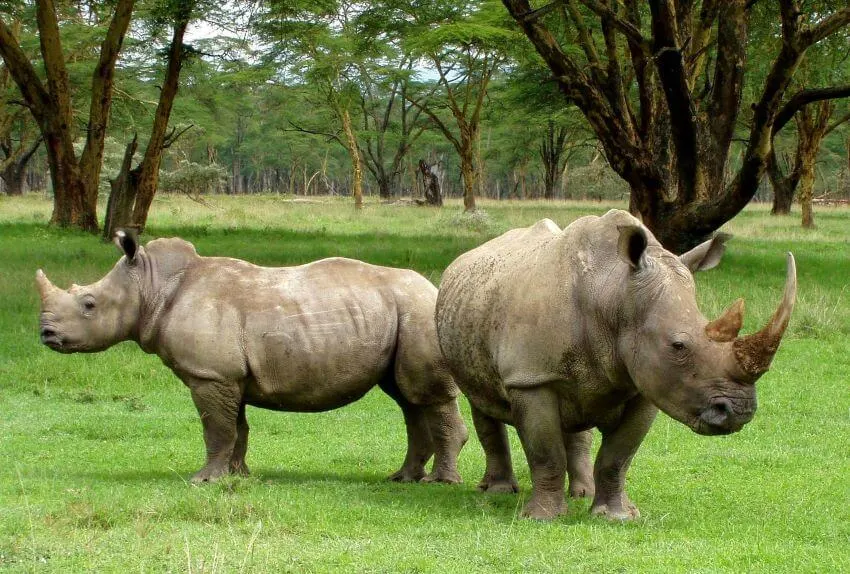
The White Rhino is classified as critically endangered and on the brink of extinction. White Rhinos were nearly hunted to extinction in the 1970s and 1980s, and numbers have steadily declined by about 3% annually.
This species was recently reclassified as critically endangered after it was close to being considered extinct in 2013. White Rhinos are killed by poachers for their horns, which are then sold illegally on the black market (where they can be worth more than $300,000 per kilogram).
They live in the African regions of Uganda and Kenya, but their populations dwindled from around 35,000 each during the 1990s to less than 20,000 today.
Threats

Rhino horns are highly valuable in some East Asian countries because of the belief that the horn possesses medicinal properties. These beliefs, however, hold no scientific weight. The horns growing demand from the Asian market is the main threat to all rhino species.
While the southern white rhino is not endangered because of successful conservation efforts, northern white rhinos are on the brink of extinction in the wild and may already be extinct.
See Related: Difference Between African and Asian Elephants: A Comprehensive Comparison
Conservation efforts
Conservationists are undertaking efforts to increase the numbers of rhinos by establishing new protected areas and increasing existing areas, improving security to combat and ultimately stop poaching, improving local and international laws to stop the horn trade, and promoting eco-tourism.
See Related: Best Conservation Posters
Organizations
Dambari Wildlife Trust
Dambari Wildlife Trust work to protect this species in Zimbabwe through fieldwork, research, education, and outreach programs. They were an international rhino foundation that conserve Rhinos. They also provide supplies to rangers to stop poaching and support translocations of rhinos in danger.
Save the Rhino
Save the Rhino works with local partners in Asia and Africa to protect the five different rhino species. They support anti-poaching activities, monitoring, environmental education, community conservation, translocations, and captive breeding.
Final Thoughts
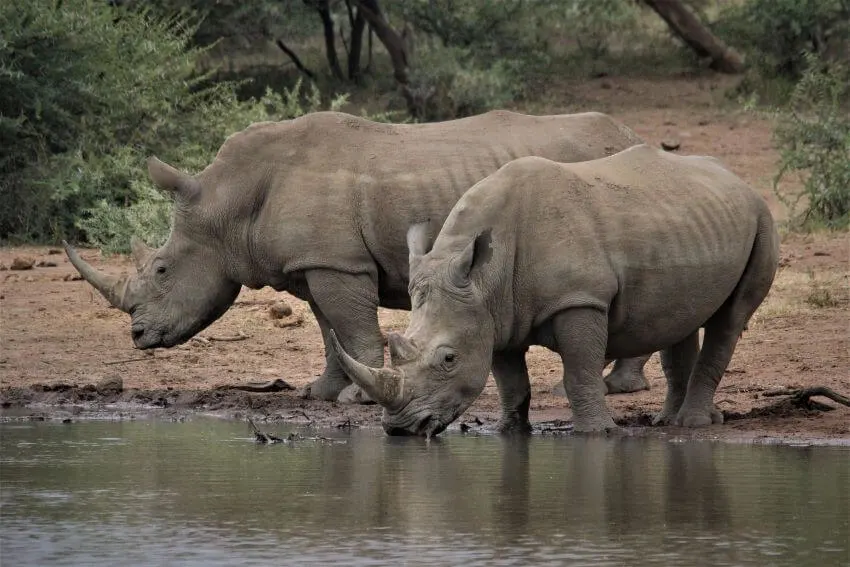
White Rhinos are large, herbivorous animals that live in the African regions of Kenya and Uganda. They are one of the largest land mammals including African elephant on Earth but they are rapidly becoming endangered due to poaching for their horns and uncontrolled hunting.
These species have a good sense of smell, and adult males defend territories and travel within their family group until mating season occurs. White rhino females typically form a mother and calf unit with other female calves from neighboring groups during this period.
White rhinos mate around April or May, which takes 15 months before birthing can occur again. Conservationists classify The White Rhino as a critically endangered species because of poachers.
FAQ
Southern and Northern White Rhinoceros: What’s the difference?
Southern White Rhinos live in South Africa, while Northern White Rhinoceros live in Central Africa.
How many White Rhinoceros species are there?
There are two white African species of rhino. One is the Northern White Rhino, and the other is the Southern White Rhino.
Unlike other rhinos, White Rhinos have poor vision so they rely on hearing, smell, and their sense of touch to detect predators and prey. Additionally, White Rhinoceros’ also use natural echolocation for navigation.
White Rhinoceros’ natural habitat occupies a wide geographic range since they can survive in mountainous and flatlands (even in Kruger Park’s blackthorn bush).
They feed primarily on grasses; however, they will eat leaves if food is scarce or buds from trees when grasses aren’t available.
When is mating season for White Rhinos?
These rhinos mate around April or May. It takes 15 months before White Rhino females can give birth again. White Rhino gestation is equal to an elephant pregnancy in length, giving birth after 18 months of gestation and bearing one calf every 2-3 years.
Why is the White Rhino endangered?
Due to white and black rhinos poaching for their horns, black rhinos are now endangered. These animals are also blind, relying on hearing and smell to detect food and predators.
What is the White Rhino conservation status?
White rhinos are considered endangered, with 20 years of the total population remaining. They have been hunted for their horns, and today, it is estimated that 1 White Rhino is killed every 6 hours.
Other Species Profiles
Related Resources
